Category Inclusive Speaking Tips
Shared on Instagram and archived here, this section shares a series of tips and tricks to become a more inclusive communication professional from your platform of choice (virtual or in-person events).
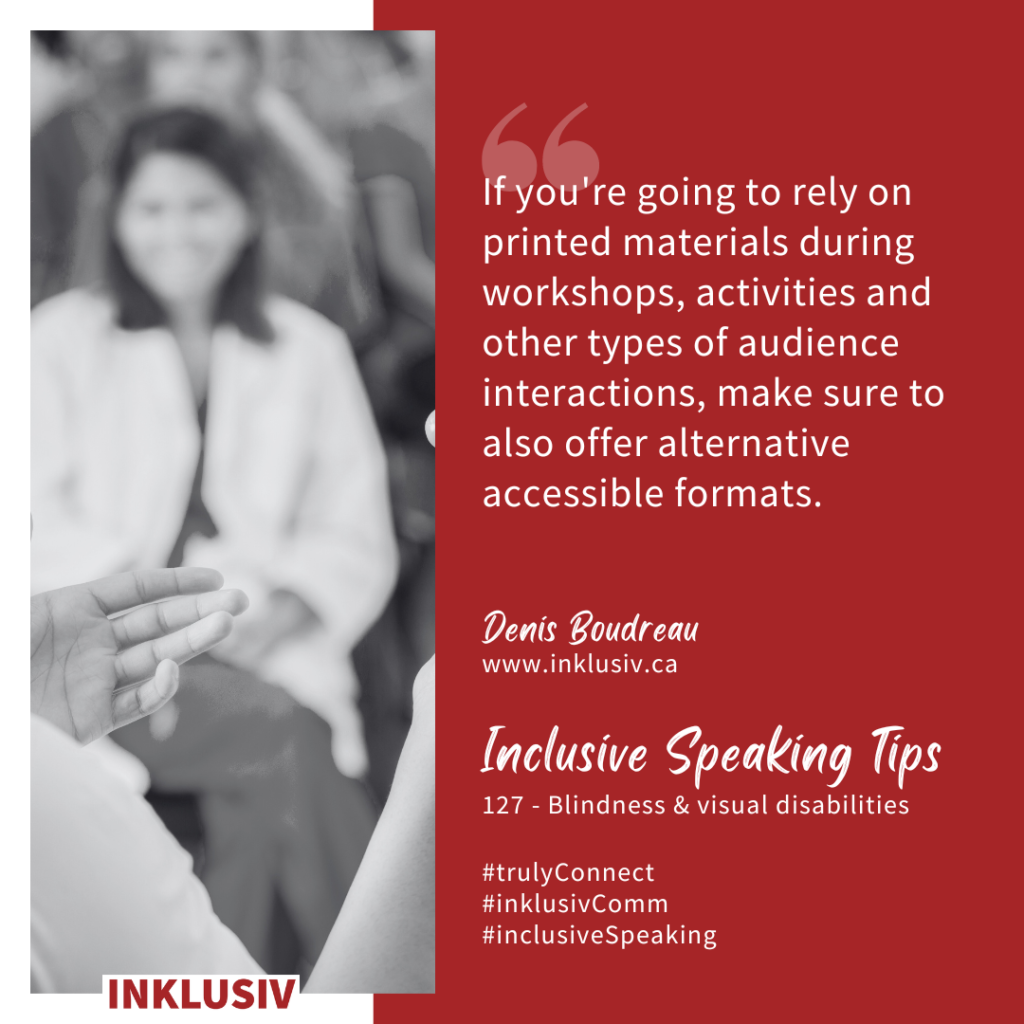

“If you’re going to rely on printed materials during workshops, activities and other types of audience interactions, make sure to also offer alternative accessible formats.”
More details about Inclusive Speaking Tip #127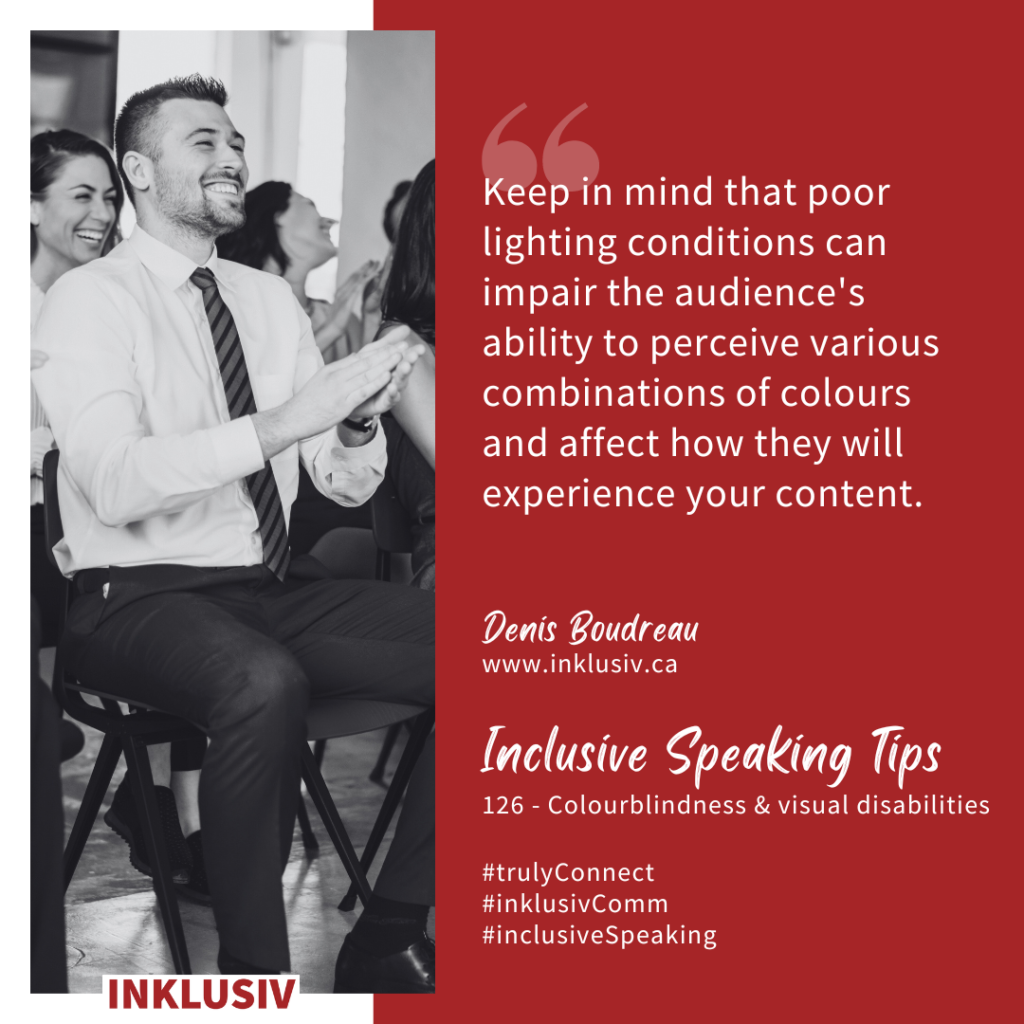

“Keep in mind that poor lighting conditions can impair the audience’s ability to perceive various combinations of colours and affect how they will experience your content.”
More details about Inclusive Speaking Tip #126

“When designing your content, stay away from complex, condensed or cursive fonts that will be harder for your audience to interpret and read from a distance.”
More details about Inclusive Speaking Tip #125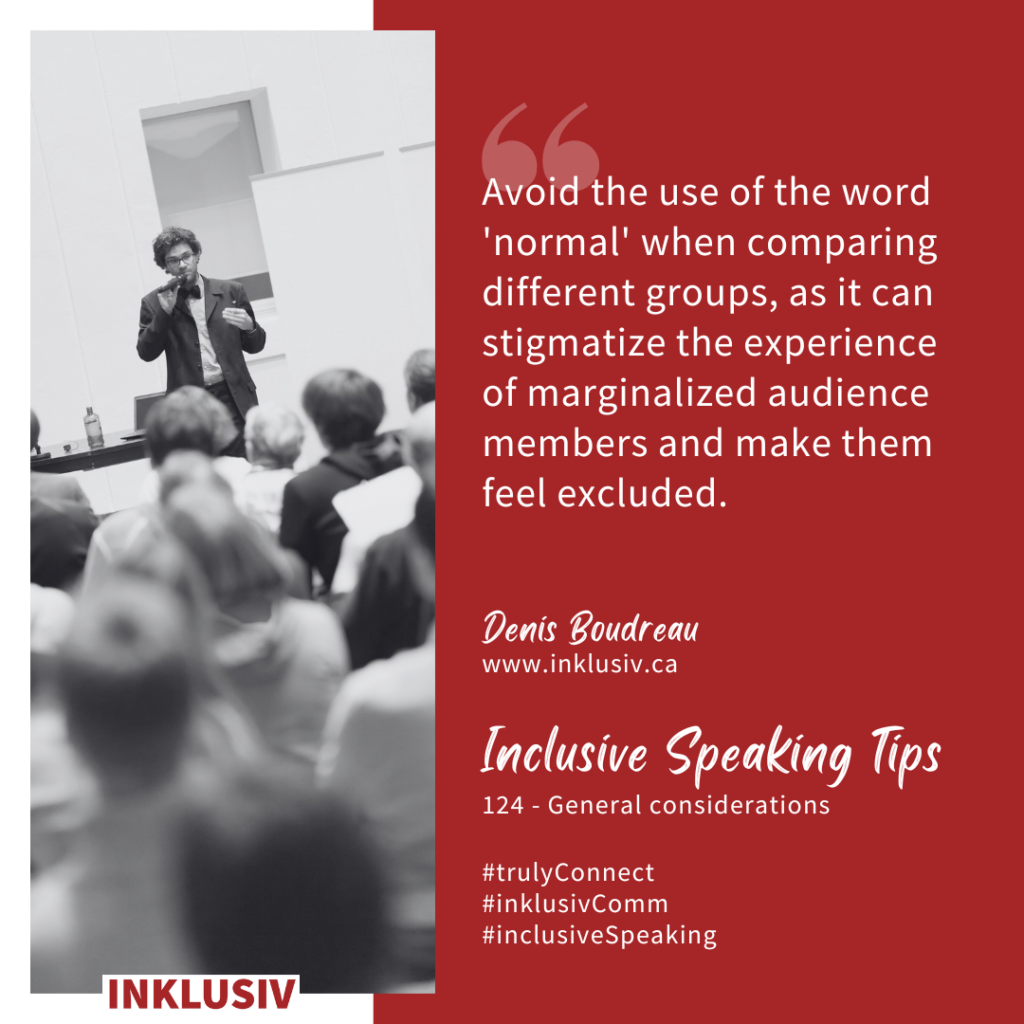

“Avoid the use of the word ‘normal’ when comparing different groups, as it can stigmatize the experience of marginalized audience members and make them feel excluded.”
More details about Inclusive Speaking Tip #124

“Make sure all relevant audio goes through the audio system, and never assume the audience can hear everything that is going on, or is being said around the room.”
More details about Inclusive Speaking Tip #123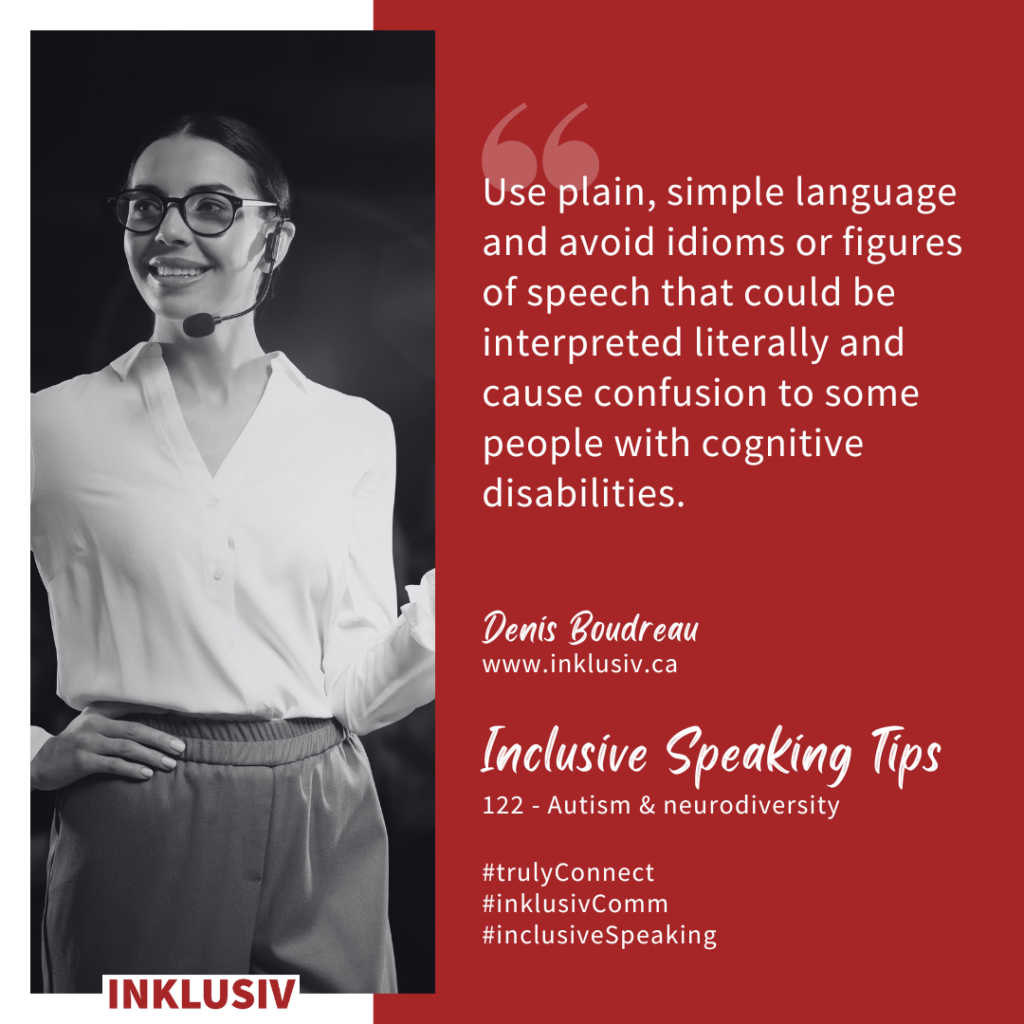

“Use plain, simple language and avoid idioms or figures of speech that could be interpreted literally and cause confusion to some people with cognitive disabilities.”
More details about Inclusive Speaking Tip #122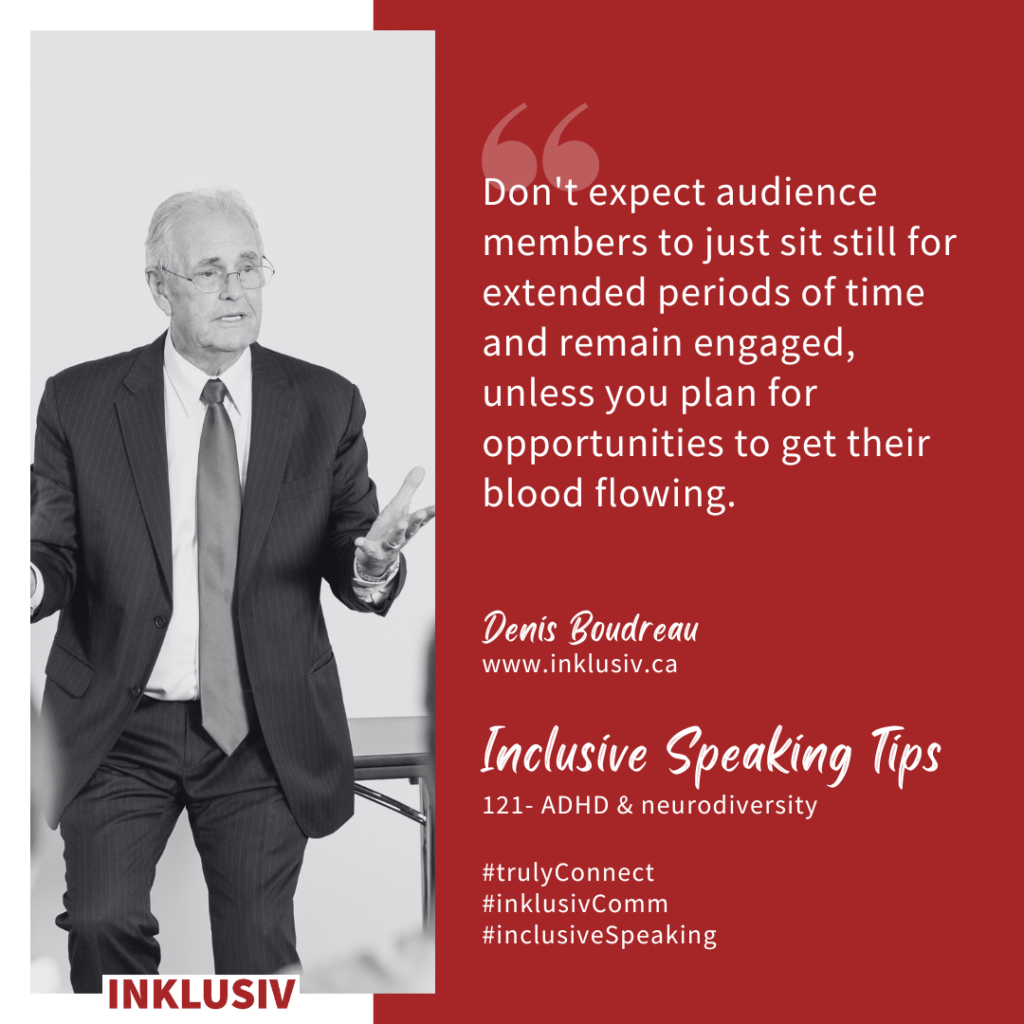

“Don’t expect audience members to just sit still for extended periods of time and remain engaged, unless you plan for opportunities to get their blood flowing.”
More details about Inclusive Speaking Tip #121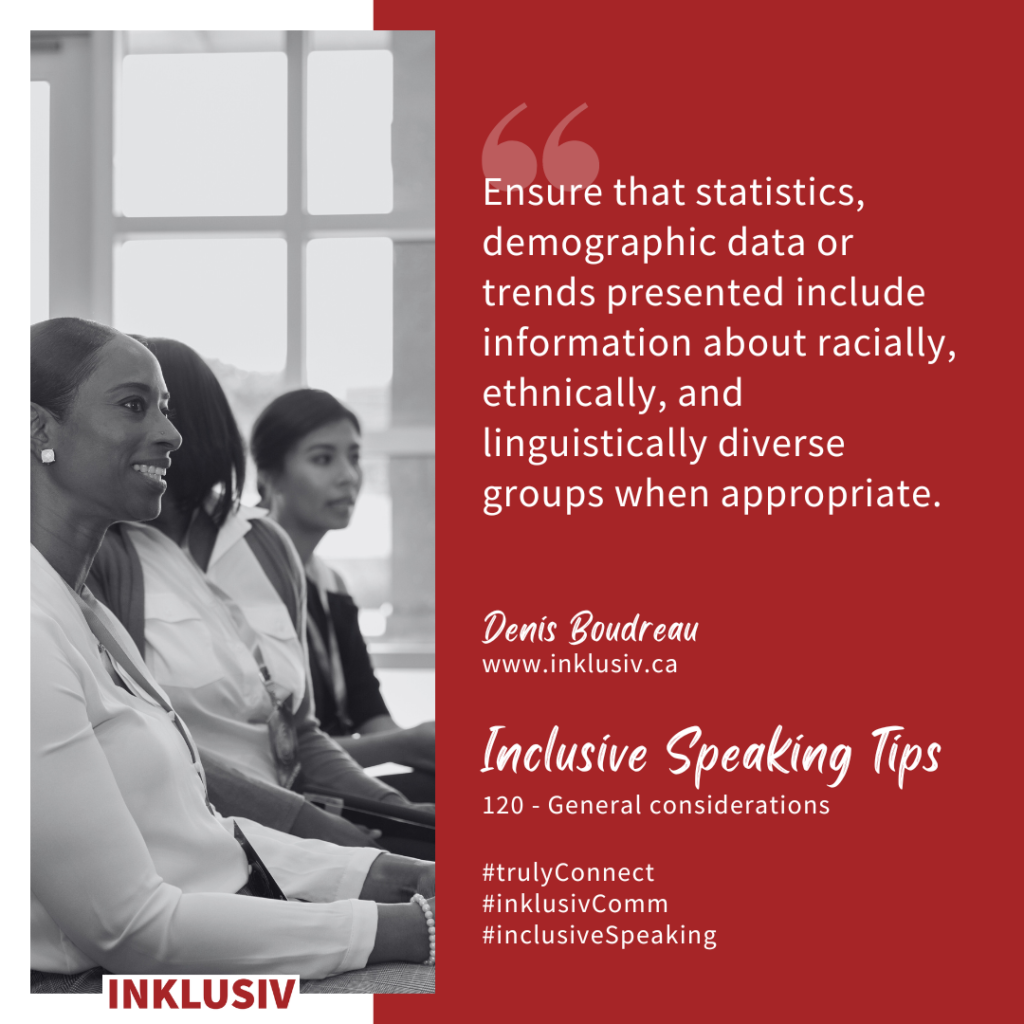

“Ensure that statistics, demographic data or trends presented include information about racially, ethnically, and linguistically diverse groups when appropriate.”
More details about Inclusive Speaking Tip #120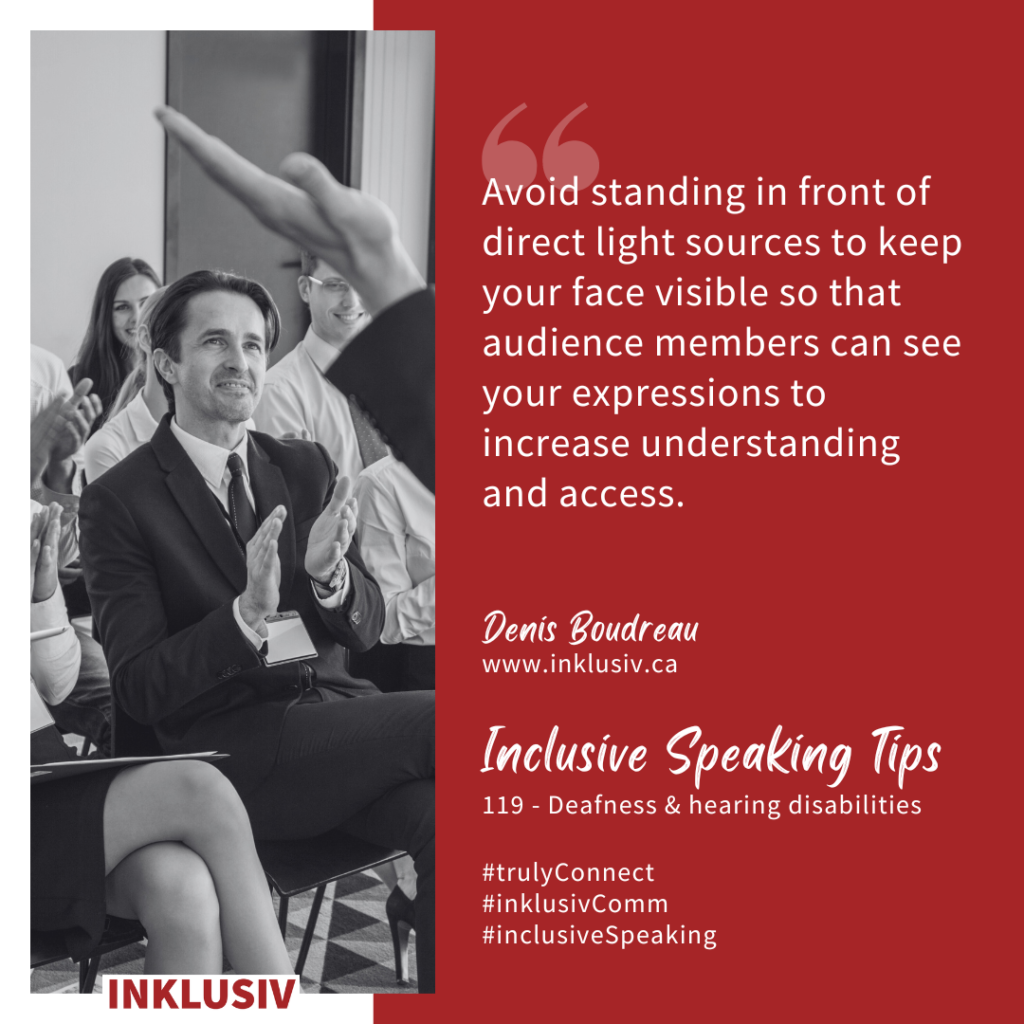

“Avoid standing in front of direct light sources to keep your face visible so that audience members can see your expressions to increase understanding and access.”
More details about Inclusive Speaking Tip #119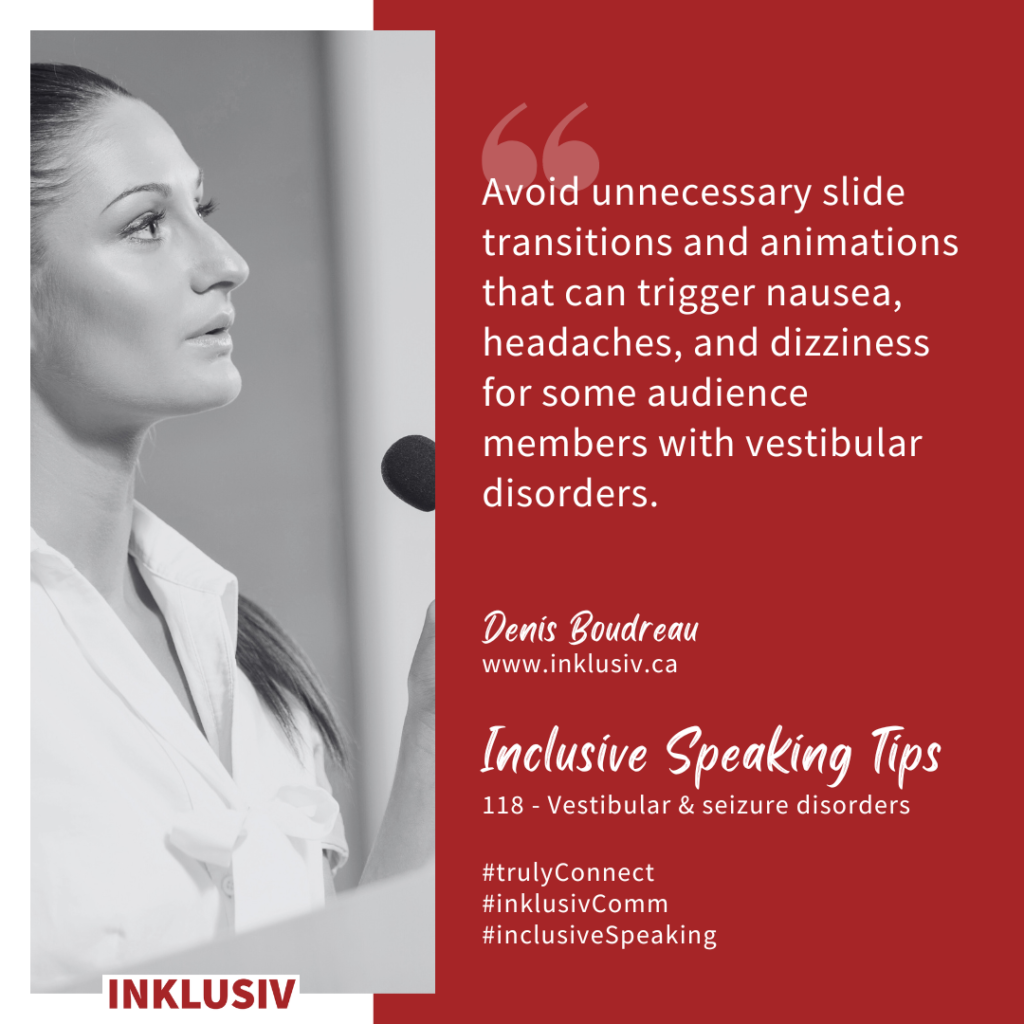

“Avoid unnecessary slide transitions and animations that can trigger nausea, headaches, and dizziness for some audience members with vestibular disorders.”
More details about Inclusive Speaking Tip #118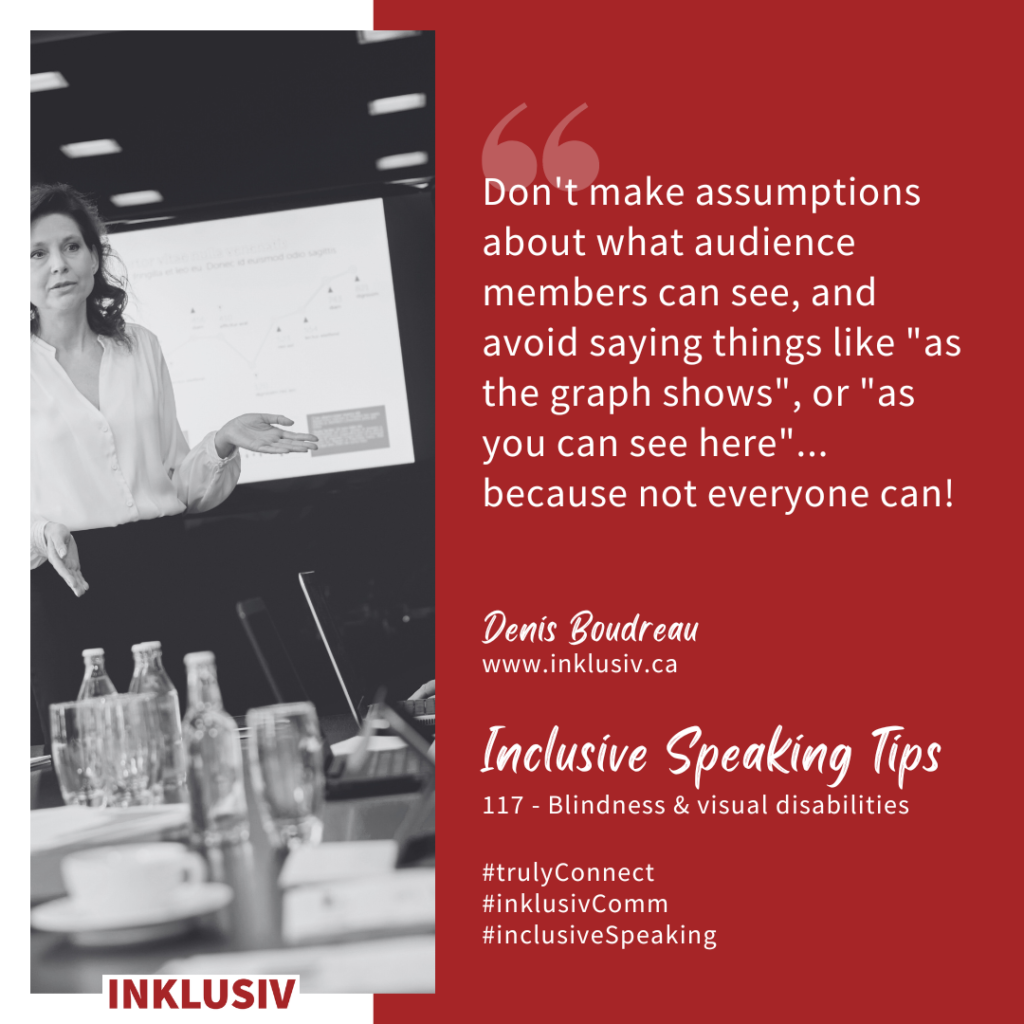

“Don’t make assumptions about what audience members can see, and avoid saying things like “as the graph shows”, or “as you can see here”… because not everyone can!”
More details about Inclusive Speaking Tip #117

“Steer clear of information positioned on top of cluttered or busy background images, if that background makes the text harder to perceive due to poor contrast.”
More details about Inclusive Speaking Tip #116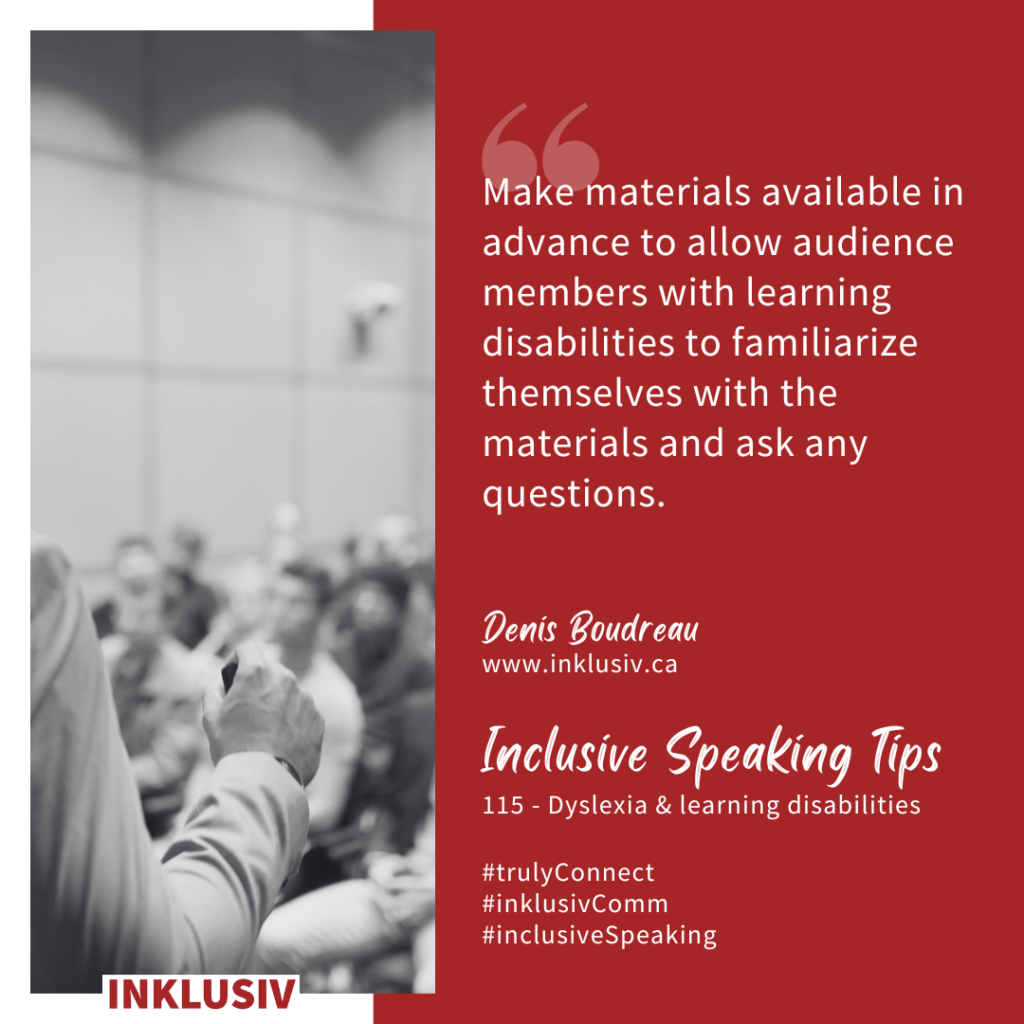

“Make materials available in advance to allow audience members with learning disabilities to familiarize themselves with the materials and ask any questions.”
More details about Inclusive Speaking Tip #115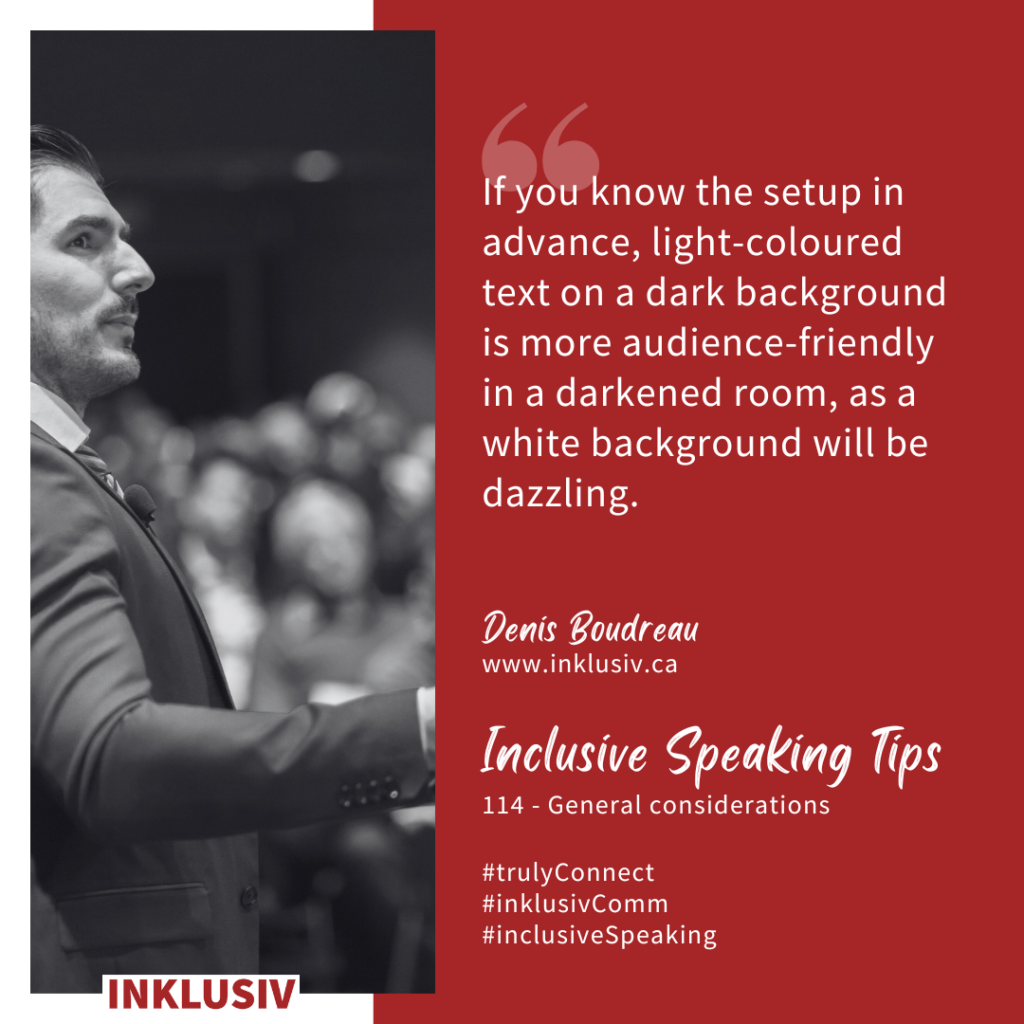

“If you know the setup in advance, light-coloured text on a dark background is more audience-friendly in a darkened room, as a white background will be dazzling.”
More details about Inclusive Speaking Tip #114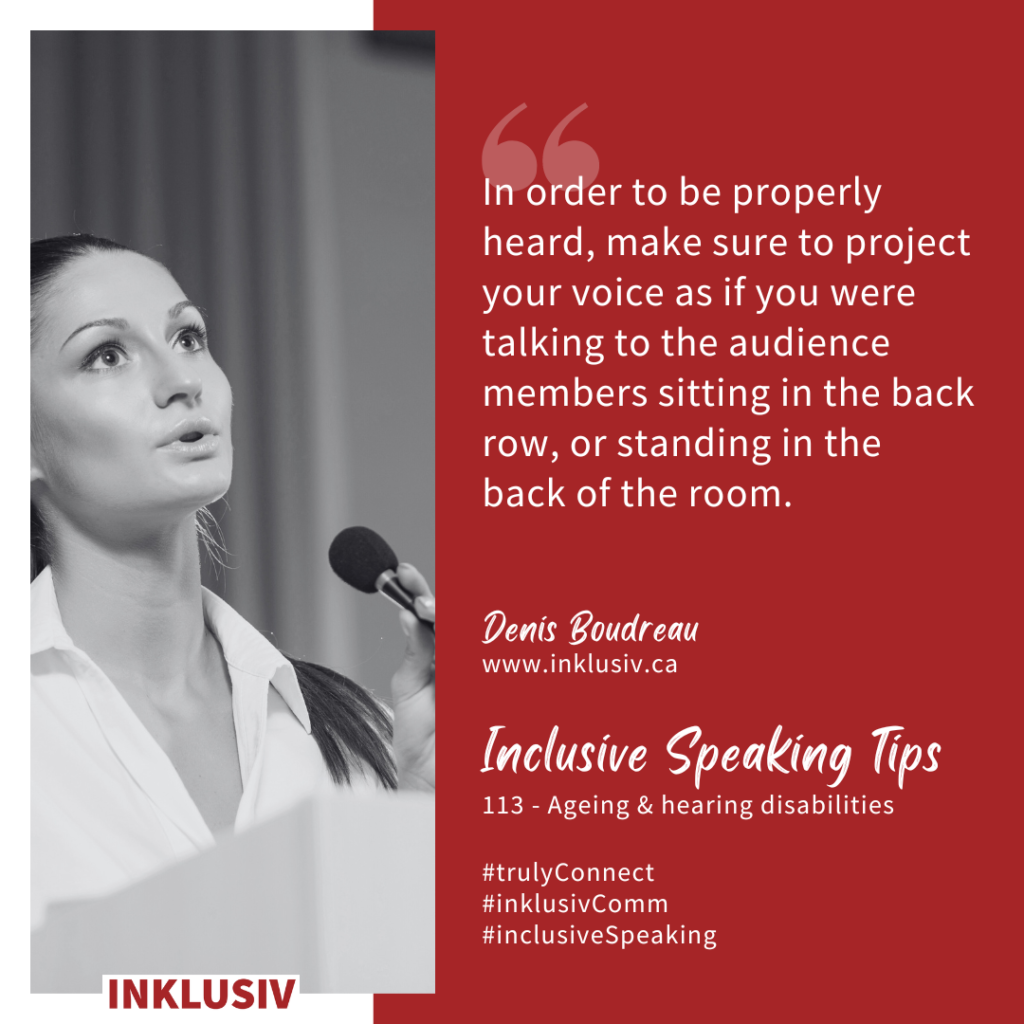

“In order to be properly heard, make sure to project your voice as if you were talking to the audience members sitting in the back row, or standing in the back of the room.”
More details about Inclusive Speaking Tip #113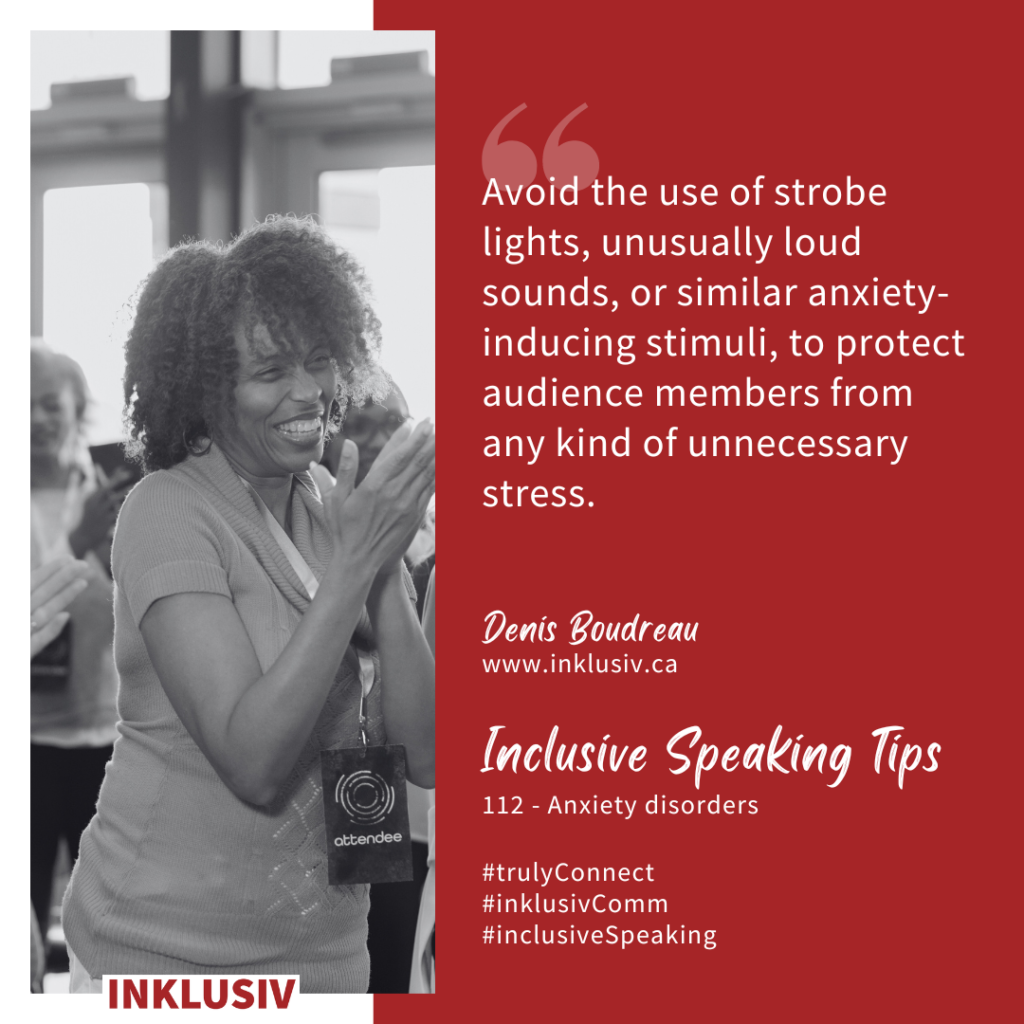

“Avoid the use of strobe lights, unusually loud sounds, or similar anxiety-inducing stimuli, to protect audience members from any kind of unnecessary stress.”
More details about Inclusive Speaking Tip #112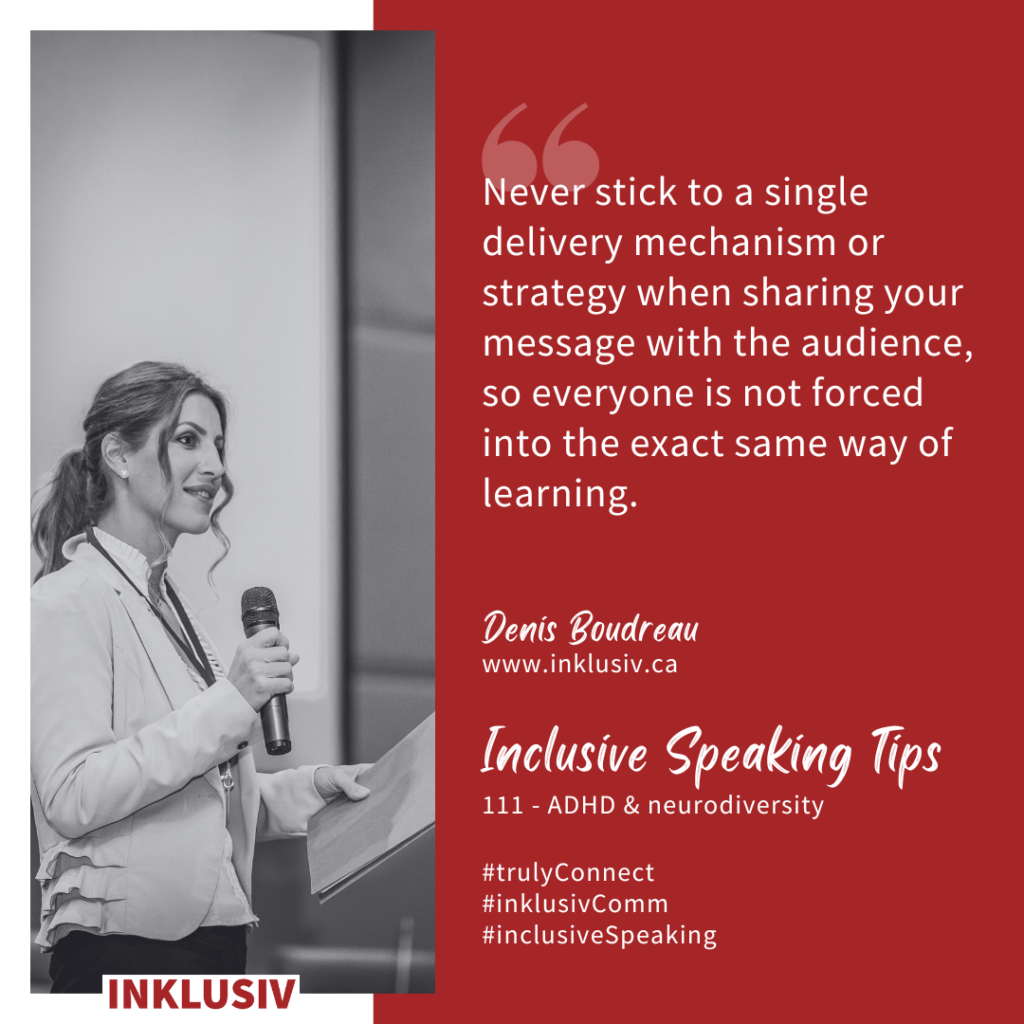

“Never stick to a single delivery mechanism or strategy when sharing your message with the audience, so everyone is not forced into the exact same way of learning.”
More details about Inclusive Speaking Tip #111

“Always write and refer to long-form handouts when the information you need to share with your audience doesn’t necessarily translate well to slides.”
More details about Inclusive Speaking Tip #110

“If presenting at an event that provides these services, send your materials to interpreters and captioners in advance so, they can research and practice unfamiliar terms.”
More details about Inclusive Speaking Tip #109

“Don’t set your videos to auto-play by default, and avoid animations, carousel sliders, and other rapid movement assets that automatically launch on the screen.”
More details about Inclusive Speaking Tip #108

“Quickly rehash sight gags even if feels awkward, so that some of your audience members don’t have to feel bad when everybody else laughs and they don’t understand why.”
More details about Inclusive Speaking Tip #107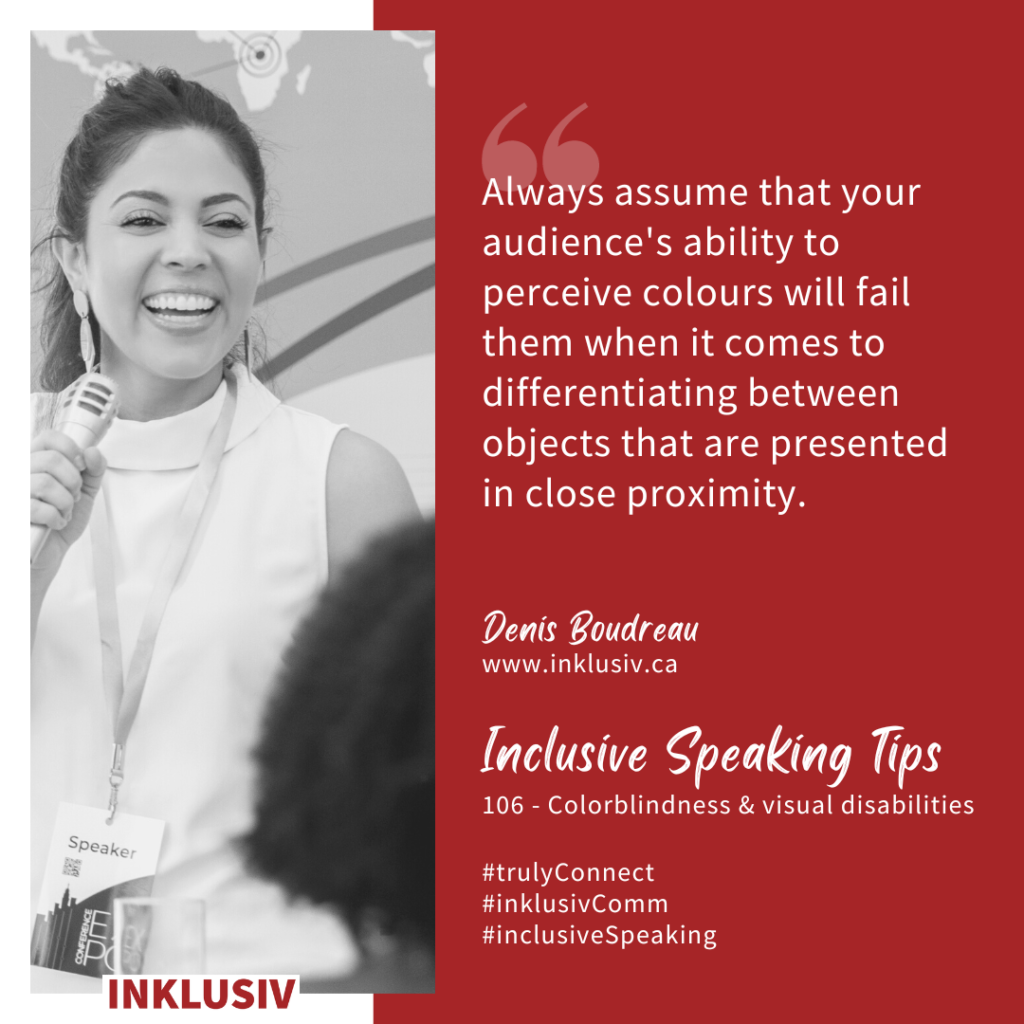

“Always assume that your audience’s ability to perceive colours will fail them when it comes to differentiating between objects that are presented in close proximity.”
More details about Inclusive Speaking Tip #106

“When working with text in your materials, avoid centered, right-aligned, or fully-justified blocks of text that makes processing information that much harder for some people.”
More details about Inclusive Speaking Tip #105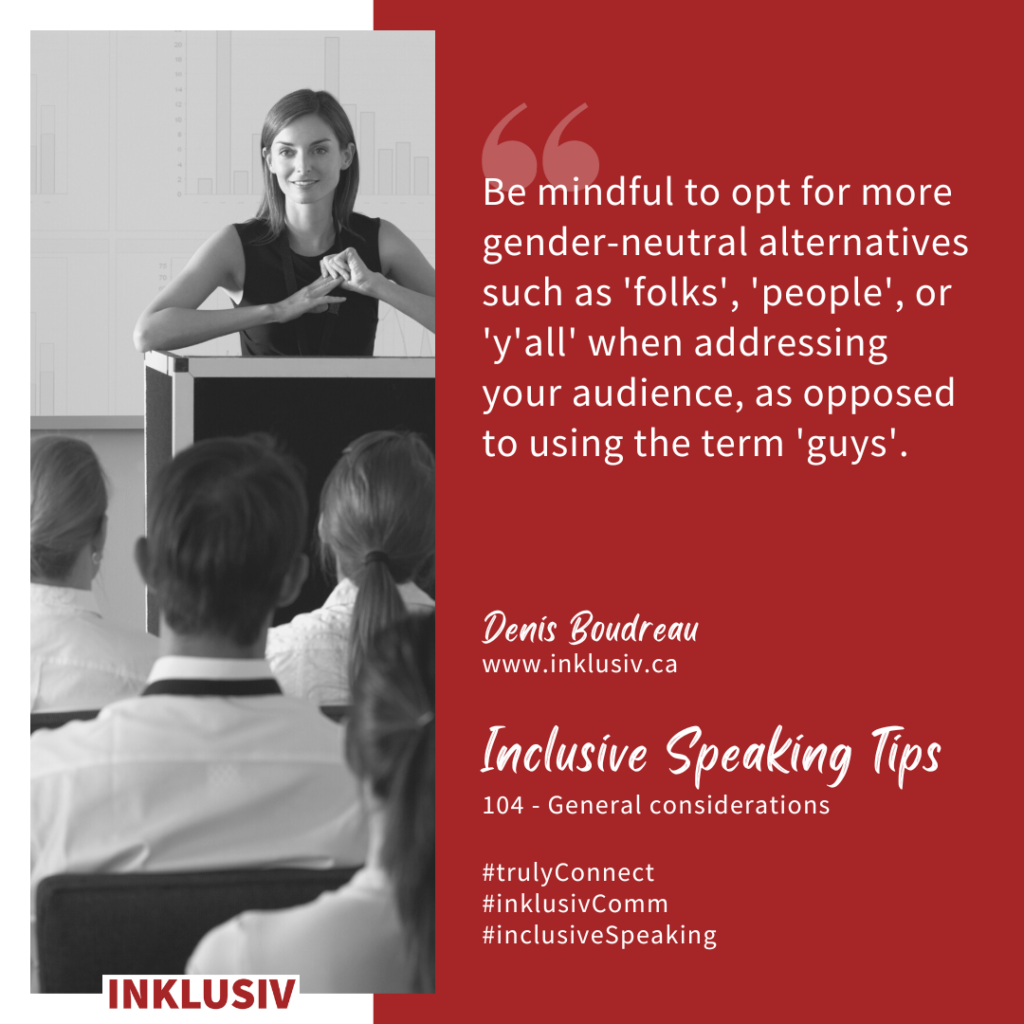

“Be mindful to opt for more gender-neutral alternatives such as ‘folks’, ‘people’, or ‘y’all’ when addressing your audience, as opposed to using the term ‘guys’.”
More details about Inclusive Speaking Tip #104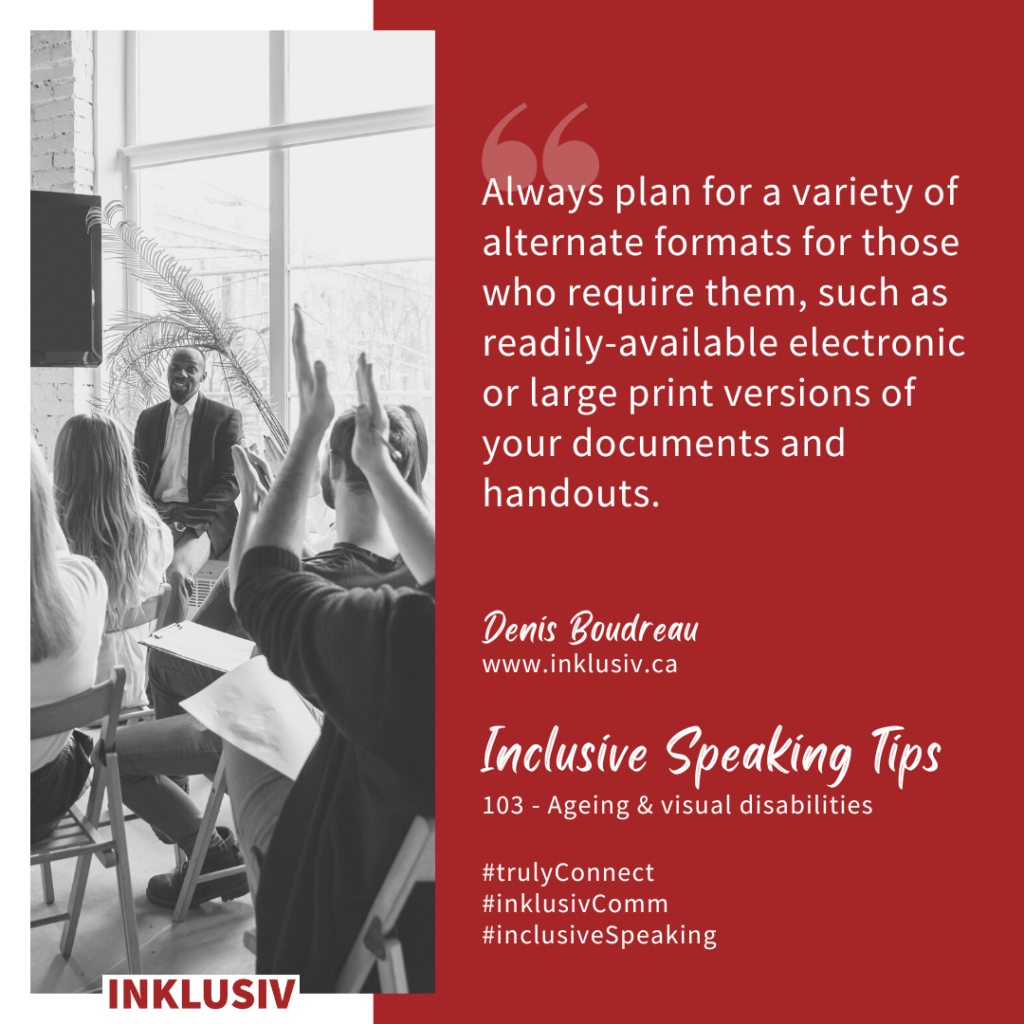

“Always plan for a variety of alternate formats for those who require them, such as readily-available electronic or large print versions of your documents and handouts.”
More details about Inclusive Speaking Tip #103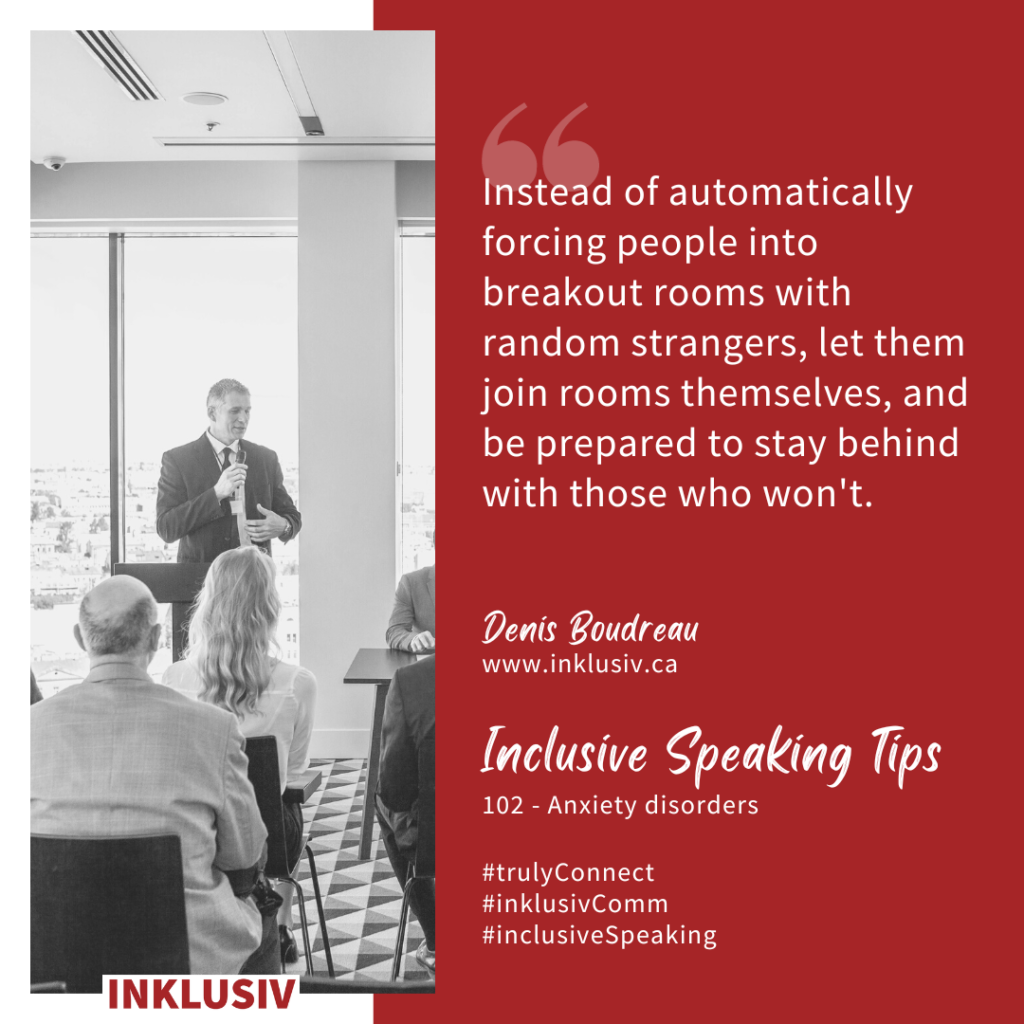

“Instead of automatically forcing people into breakout rooms with random strangers, let them join rooms themselves, and be prepared to stay behind with those who won’t.”
More details about Inclusive Speaking Tip #102

“Diversify the ways in which your deliver your content, so audience members are not forced into a passive state where their only option is to passively listen to your lecture.”
More details about Inclusive Speaking Tip #101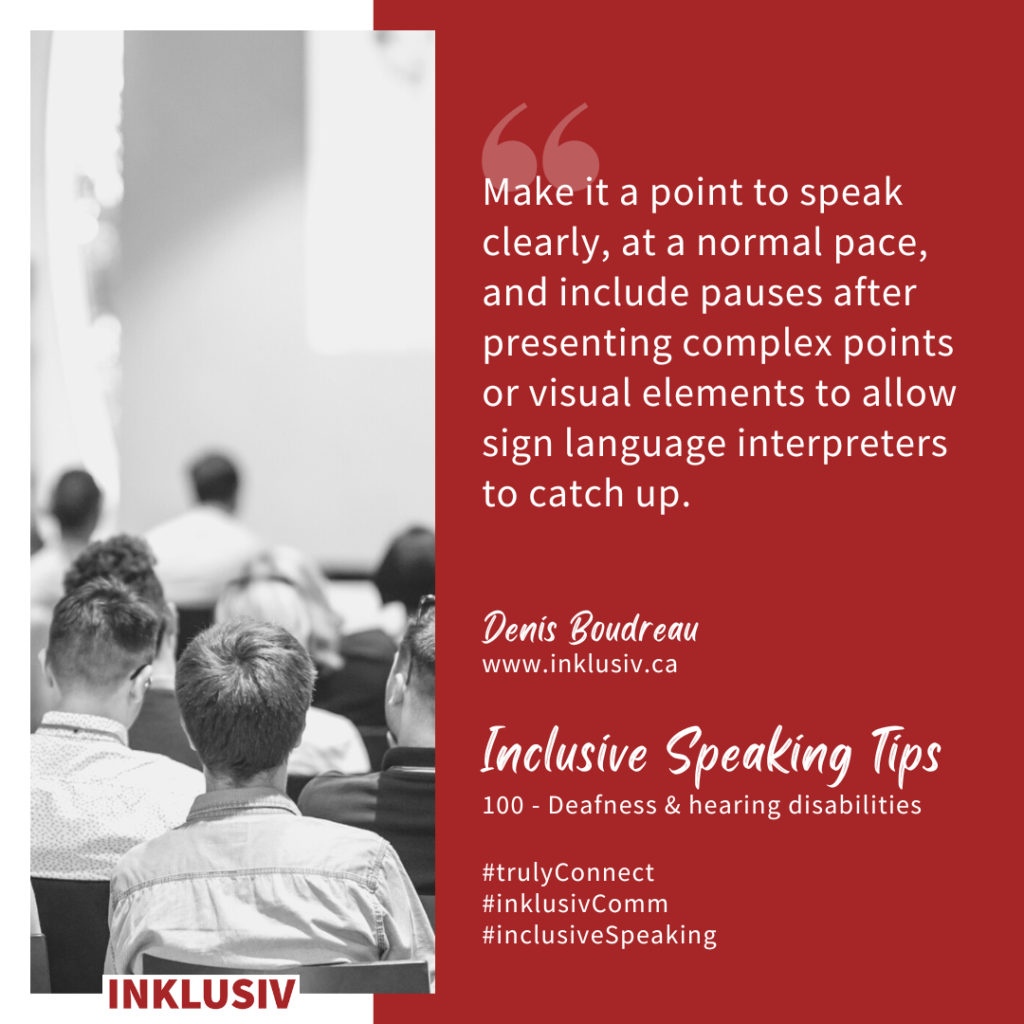

“Make it a point to speak clearly, at a normal pace, and include pauses after presenting complex points or visual elements to allow sign language interpreters to catch up.”
More details about Inclusive Speaking Tip #100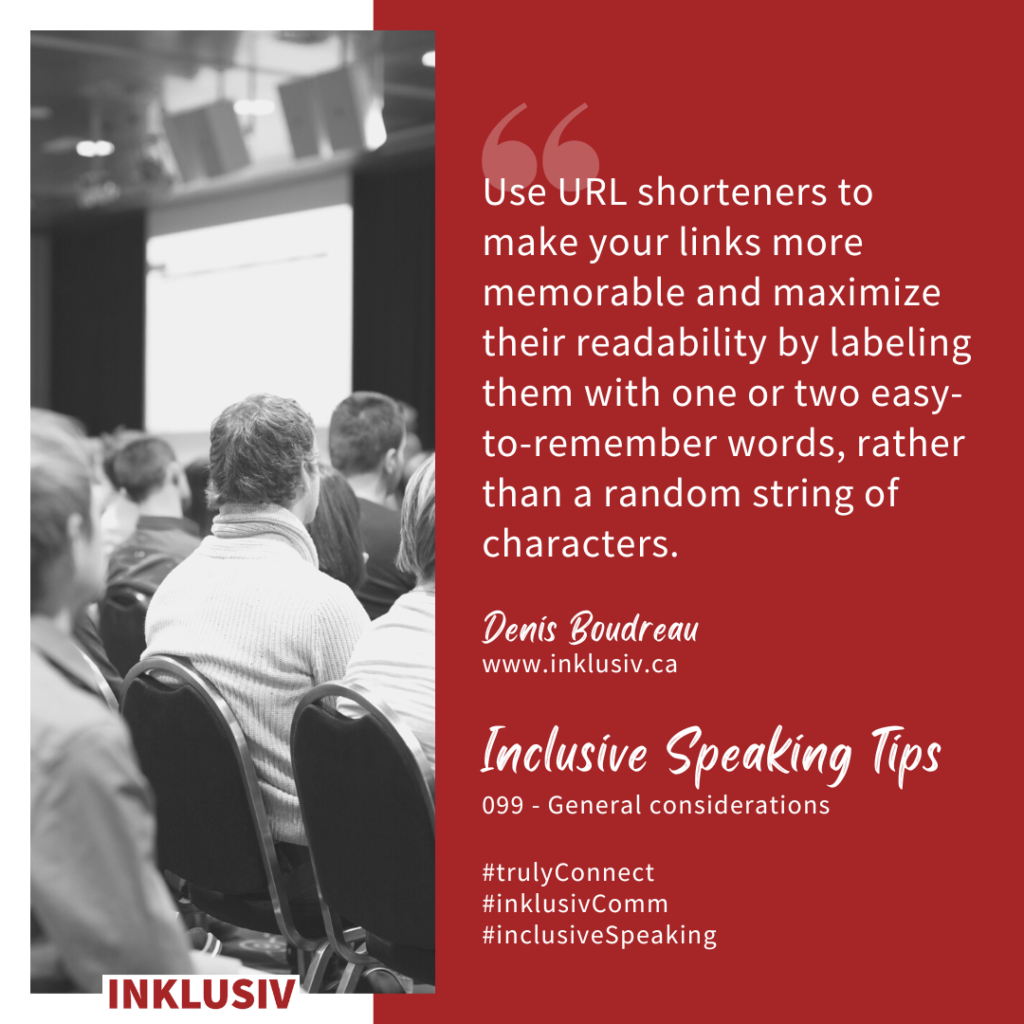

“Use URL shorteners to make your links more memorable and maximize their readability by labeling them with one or two easy-to-remember words, rather than a random string of characters.”
More details about Inclusive Speaking Tip #099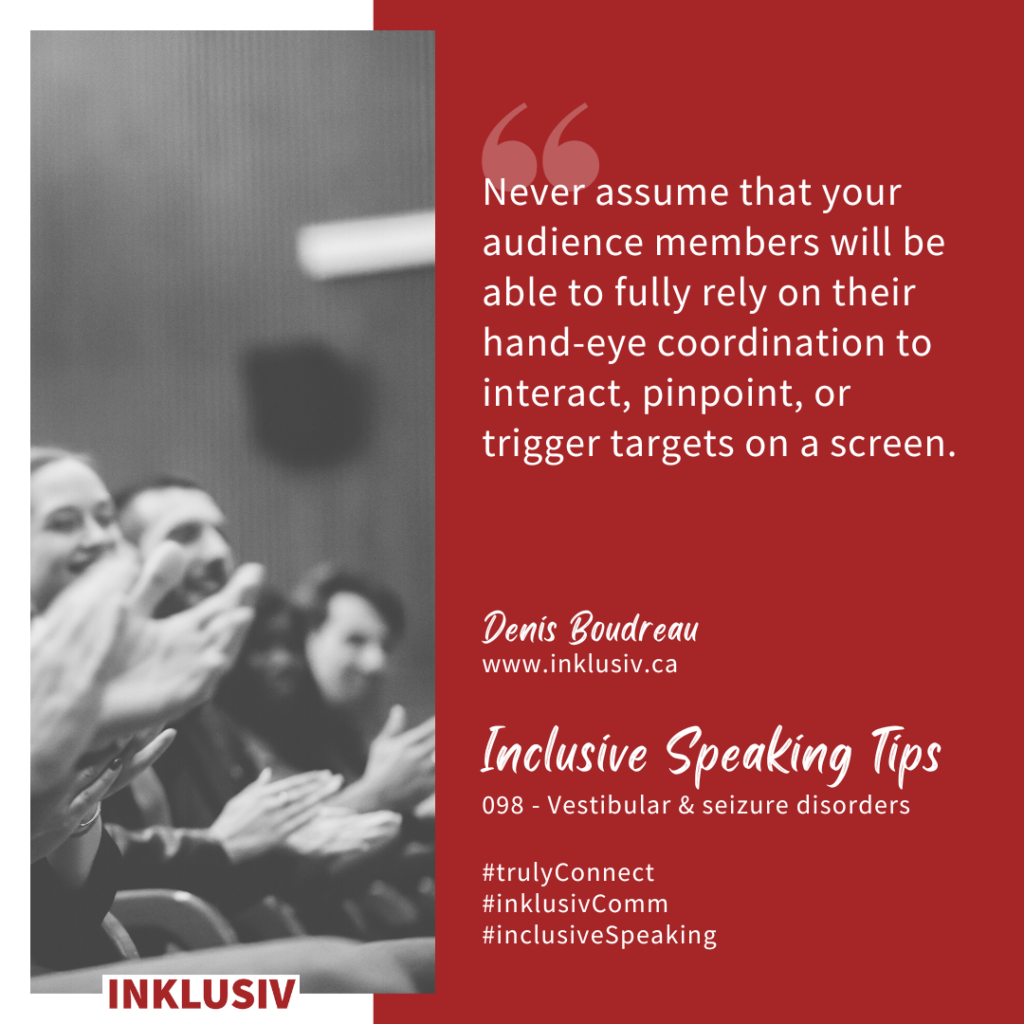

“Never assume that your audience members will be able to fully rely on their hand-eye coordination to interact, pinpoint, or trigger targets on a screen.”
More details about Inclusive Speaking Tip #098